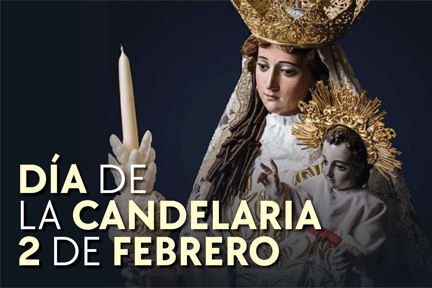Get Ready! Dia de la Candelaria is right around the corner
News Category: News and General Discussion
-
Published December 30, 2024
Candelaria is not entirely a plant festival.
The Candelaria fair, previously known as the “Flower Fair” is one of the most deeply rooted traditions among the population of San Miguel de Allende and soon will be ready to open to the world.
This colorful fair consists of the exhibition and sale of seeds and all varieties of plants and trees, highlighting the floral plants, which fill the halls of Benito Juárez Park with color and aroma, an area in which has been held since the end of the eighties.
More than a hundred flower growers and nurserymen, both local and from different states of the republic, come to San Miguel de Allende, who will offer you excellent prices and also tips for taking care of your plants.
But it is not only the perfect opportunity to beautify your garden, but also to enjoy an extraordinary cultural experience, since, as this celebration has its origins in pre-Hispanic times, it is also customary for different groups of concheros “native dancers”, belonging to the native peoples who still exist in the region, they arrive on Candlemas Day to hold a vigil to which anyone who with faith and respect wishes to live this experience can attend. The fair usually begins the second week of January.
So, what is Candelaria?
While in the United States, they have Groundhog Day, in Mexico they have Candelaria. Known as Candlemas in English, there are many Catholic countries that celebrate Día de la Candelaria. However, Candelaria in Mexico has special traditions that are only found in Mexico, some of which even date back to the Prehispanic times.
When Is Día De La Candelaria?
Día de la Candelaria takes place 40 days after Christmas. The holiday is celebrated on February 2nd because, according to ancient Jewish tradition, a woman was considered unclean after giving birth, and was not allowed in the Temple for 40 days after the birth of a child. Therefore, Día de la Candelaria celebrates when the Virgin Mary was allowed to enter the Jewish Temple. It is also considered the true end of the holiday season—after Three Kings Day—which signals the complete end of the winter festivals.
Día de la Candelaria is one of the oldest celebrations in Christendom. Historical records attest to festivals held in Jerusalem during the 4th Century C.E. We also have evidence for Candlemas being celebrated in Rome, and other parts of the Roman Empire. The themes of purification involved in Dia de la Candelaria meant that it was often combined with other pagan celebrations around that time, such as Lupercalia. Candlemas has since been observed in locations throughout Europe and the Americas.
Día de la Candelaria is not an official holiday in Mexico. It can sometimes land on Constitution Day (which is the first Monday in February), but as a holiday, it’s not observed throughout the whole country. However, there are many places that celebrate Día de la Candelaria with special mass services that commemorate the religious holiday.
One of the typical features of Día de la Candelaria is the eating of tamales. Traditionally, Rosca de Reyes (a special loaf of sweet bread) is served on Three Kings Day—which is celebrated on January 6th. Inside this bread is hidden a tiny figurine of Baby Jesus. Whoever finds this figurine has to host the Candlemas celebration, which includes cooking loads of tamales for the whole family.
A popular location for celebrating Día de la Candelaria is in San Juan de los Lagos, in the state of Jalisco, a 2 hr and 45 min drive from San Miguel de Allende. One of the most visited sites in Mexican Christendom, the cathedral in San Juan de los Lagos is flooded with religious pilgrims for a week-long celebration in the village. This is why the pilgrimage to San Juan de Los Lagos from San Miguel takes place every year around that time.
The people in the pilgrimage arrive back in San Miguel on CANDELARIA day February 2.
Día de la Candelaria include a family gathering where a big dinner is served. The specialty of the night is tamales. As mentioned above, the family that finds the Baby Jesus figurine baked into the Rosca de Reyes ( the sweet – bread ) has to host the celebration, and thus, they have to provide the tamales.
Another custom consists of the Baby Jesus doll—called Niño Jesus in Spanish—that was used in the nativity scene of one’s home during Christmas is then dressed up and brought to the local church, thus, an imitation of the Virgin Mary presenting Jesus to the Temple 40 days after giving birth.
Though an old custom according to Catholic tradition, Día de la Candelaria is still celebrated throughout Mexico today. This only goes to show that history is alive in Mexico and especially here in San Miguel de Allende with all its traditions and customs that are deep-rooted seeds of the Catholic religion, its traditions are an important part of our Cultural City, whether you live here full-time or are visiting, you bet to be sure of a lot of enjoyment to be had.
We recommend that you check out all the local festivities happening at Parque Benito Juarez and Cultural events provided by the City.
Performances and events to be announced.
The Social Spanish group
Somos Language and Art Center
Refugio Sur 35 Col San Antonio
Efrain Gonzalez 415 109 7994
eg333837@gmail.com -


Leave a Reply